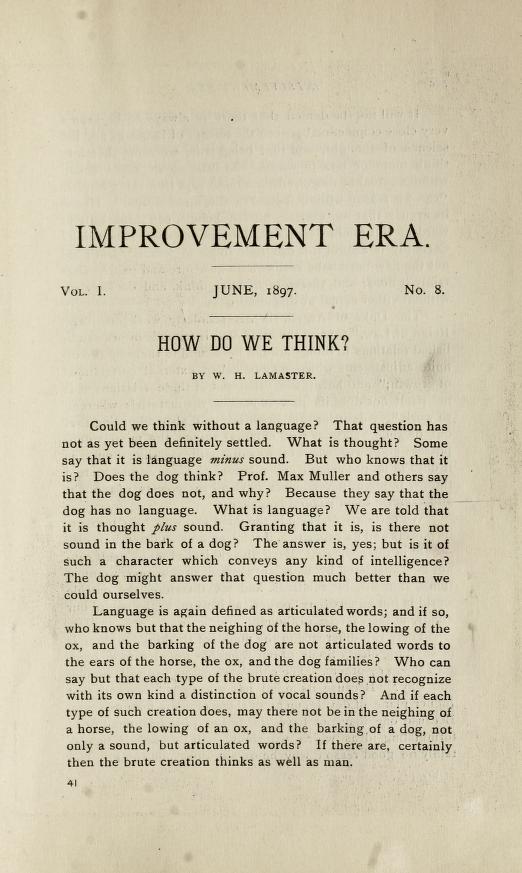(Feb. 14, 1841 -July 28, 1908). William Hammond LaMaster advocated for religious skepticism, agnosticism, and anti-temperance. His ideas underscored the tenets of the German progressive movement known as , a view that one’s thoughts should not be based on authority, tradition, revelation, or dogma. The emerging influence of this non-traditional approach to thinking took hold of Indiana during the late 19th century.
William Hammond LaMaster was born in Shelbyville, Indiana, to Benjamin and Elizabeth LaMaster. In his early adulthood, LaMaster served in the 89th and 146th Indiana Infantries during the . In 1865, at the end of the war, he returned to Shelbyville where he passed the bar exam and started his law practice. The following year he married Harriet Reed on December 26, 1866.
By 1868 LaMaster became known as a promising lawyer within the Republican Party. In addition to his legal work, LaMaster began writing a regular newspaper column for the Connersville Examiner called “Liberty Items,” sharing his thoughts on local happenings in Liberty Township, Union County, Indiana.

By the late 1870s, LaMaster lived in Indianapolis where his ideas about freethinking became clear through his lectures and published works. In May 1879, LaMaster presented a lecture at Terre Haute’s Dowling Hall entitled “The God of the Bible.” That same year he published an exposé in the criticizing spiritualist mediums Anna Stewart, Laura Morgan, and Dr. Allen Pence, concluding “that I saw nothing on my late experience among spirits in Terre Haute to convince me of the truth of modern spiritualism.” He also gave several anti-temperance lectures; LaMaster viewed the movement as an overzealous development that sought to control people’s lives.
In 1882, LaMaster began publishing The Iconoclast, a newspaper where he shared his ideas and those of fellow freethinkers such as Robert Ingersoll, one of the movement’s most popular and most influential figures during the “Golden Age of Freethought” in the United States from the 1870s to the 1910s. LaMaster ambitiously published Ingersoll’s “Answers to Indianapolis Clergy,” where Ingersoll offered remarks on the historical accuracy of Jesus’s life, the beginnings of the universe, and morality. Despite the success of the article, the lack of organization within the Indianapolis freethought community led to the short life of The Iconoclast which ceased publication in 1886.
LaMaster continued to write and publish in various newspapers and journals throughout the 1880s and 1890s—most notably the . In one piece, “How Do We Think?” LaMaster discussed the interaction of language and human minds, and whether language is necessary for human thought. In 1896, he published, “The Growth and Magnitude of the Sidereal Heavens,” in Popular Astronomy, where he explored the potential existence of extraterrestrial life. He outlined his view about the God question and defended the position of agnosticism in an 1898 article for the Improvement Era titled, “What Agnosticism Is.”
In 1906, he and his family moved to Westphalia, Indiana, where he continued his intellectual pursuits until his death in 1908 at the age of 67.

Help improve this entry
Contribute information, offer corrections, suggest images.
You can also recommend new entries related to this topic.